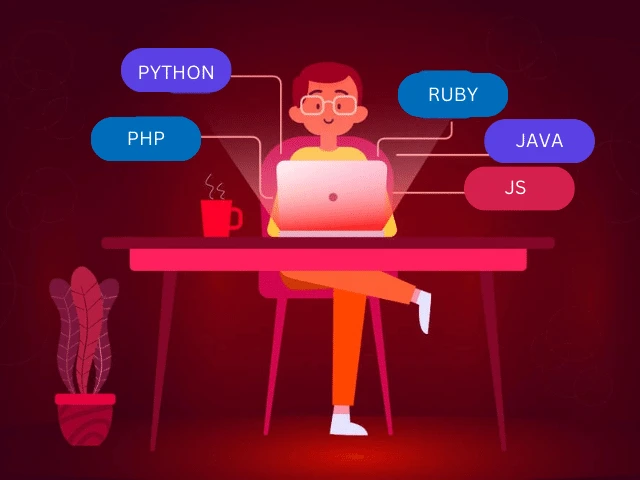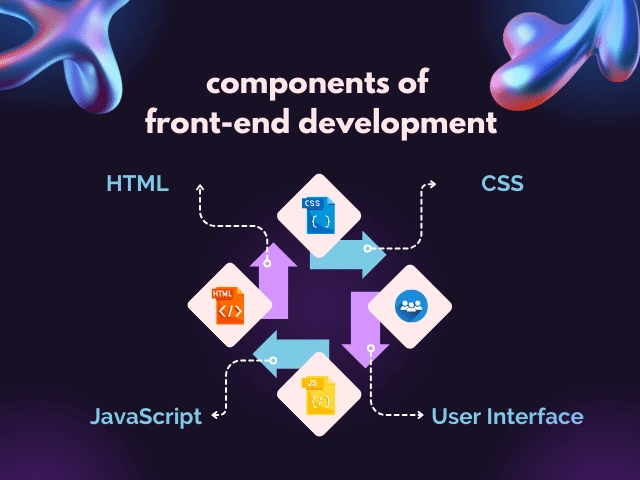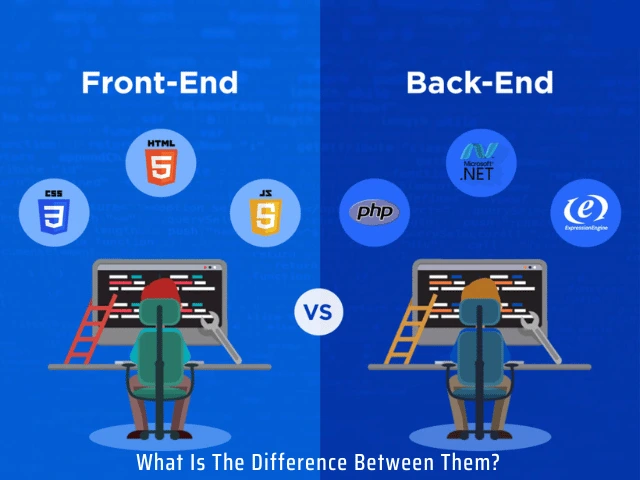Front-End Vs Back-End: What is the difference between them?
The back-end and front-end are two essential components of web development that work together to create functional and user-friendly websites and web applications. In this explanation, we’ll delve deeper into the concepts of back-end and front-end, highlighting their differences and roles in web development.
Back-End Development:

Back-end development refers to the server-side programming and processes that occur behind the scenes of a website or web application. It focuses on handling data, implementing business logic, and managing the communication between the server and the client.
At its core, the back end is responsible for processing requests from the front end, performing computations, retrieving and storing data in databases, and providing the necessary information to the front end for display. It deals with the server infrastructure, databases, APIs, and other components that facilitate the functionality of a website.
Back-end development involves utilizing programming languages, frameworks, and tools that are specifically designed for server-side operations. Some popular back-end programming languages include Python, PHP, Ruby, Java, and JavaScript (with Node.js). Frameworks like Django, Laravel, Ruby on Rails, and Spring provide a structured and efficient environment for developing back-end applications.
Key components of back-end development include:

1. Server:
The server is a computer or a network of computers that host the website’s code and respond to client requests. It runs the back-end application and handles the processing and storage of data.
2. Database:
Back-end developers work with databases to store, retrieve, and manipulate data. They design database schemas, write queries, and ensure data integrity. Common database systems include MySQL, PostgreSQL, MongoDB, and Oracle.
3. Business Logic:
Back-end developers implement the core logic and algorithms that drive the functionality of a website or web application. This involves processing user input, performing calculations, handling authentication and authorization, and integrating with external services or APIs.
4. APIs:
APIs (Application Programming Interfaces) are used in back-end development to establish communication and data exchange between different systems, services, or applications. Back-end developers create APIs to expose functionalities that can be accessed by the front-end or other external clients.
Front-End Development:

Front-end development focuses on the client side of a website or web application, dealing with the user interface (UI), user experience (UX), and overall visual presentation. It involves designing and implementing the elements that users interact with directly in their web browsers.
The front end is responsible for rendering the content, displaying data, and enabling user interaction. It utilizes technologies such as HTML, CSS, and JavaScript to create visually appealing, responsive, and interactive interfaces.
Key components of front-end development include:

1. HTML:
Hypertext Markup Language (HTML) is the standard markup language used to structure and present content on the web. It defines the elements and their arrangement within a webpage.
2. CSS:
Cascading Style Sheets (CSS) are used to style and format HTML elements. It controls the layout, colors, fonts, and other visual aspects of the webpage, making it visually appealing and consistent.
3. JavaScript:
JavaScript is a powerful programming language that adds interactivity and dynamic behavior to web pages. It enables actions such as form validation, animations, event handling, and manipulation of HTML and CSS elements.
4. User Interface:
Front-end development focuses on creating an intuitive and visually appealing user interface. This involves designing layouts, selecting color schemes, creating navigation menus, and ensuring responsive design to adapt to different devices and screen sizes.
Differences between Back-end and Front-end:

Now that we have a better understanding of back-end and front-end development, let’s highlight the key differences between them:
1. Functionality:
Back-end development focuses on server-side processes, such as data storage, business logic, and communication with databases and external services. Front-end development handles the client-side functionality, including user interaction, content presentation, and visual design.
2. Technologies:
Back-end development involves using programming languages like Python, PHP, Ruby, Java, or Node.js and frameworks like Django, Laravel, Ruby on Rails, or Spring. Front-end development primarily uses HTML, CSS, and JavaScript along with various libraries and frameworks such as React, Angular, or Vue.js.
3. Focus:
Back-end focuses on data management, server-side logic, and system architecture. Front-end focuses on creating a visually appealing and user-friendly interface.
4. User Interaction:
Back-end processes user input performs calculations or data manipulations, and retrieves and updates data from databases. Front-end handles the rendering of the user interface, handling user interactions, and displaying the website’s content.
Both the back-end and front-end work together to create a complete web application. The back end provides the functionality and logic, while the front end ensures a seamless and engaging user experience.
Ready to get started learning Web Development? Register for a free demo
Get more details regarding Powerpoint
Phone no.
9988-500-936
Address
SCF 22, First floor, GTB Market, Khanna
Website
www.microwavecomputer.com
Opening Hours
08:30 am - 06:00 pm
